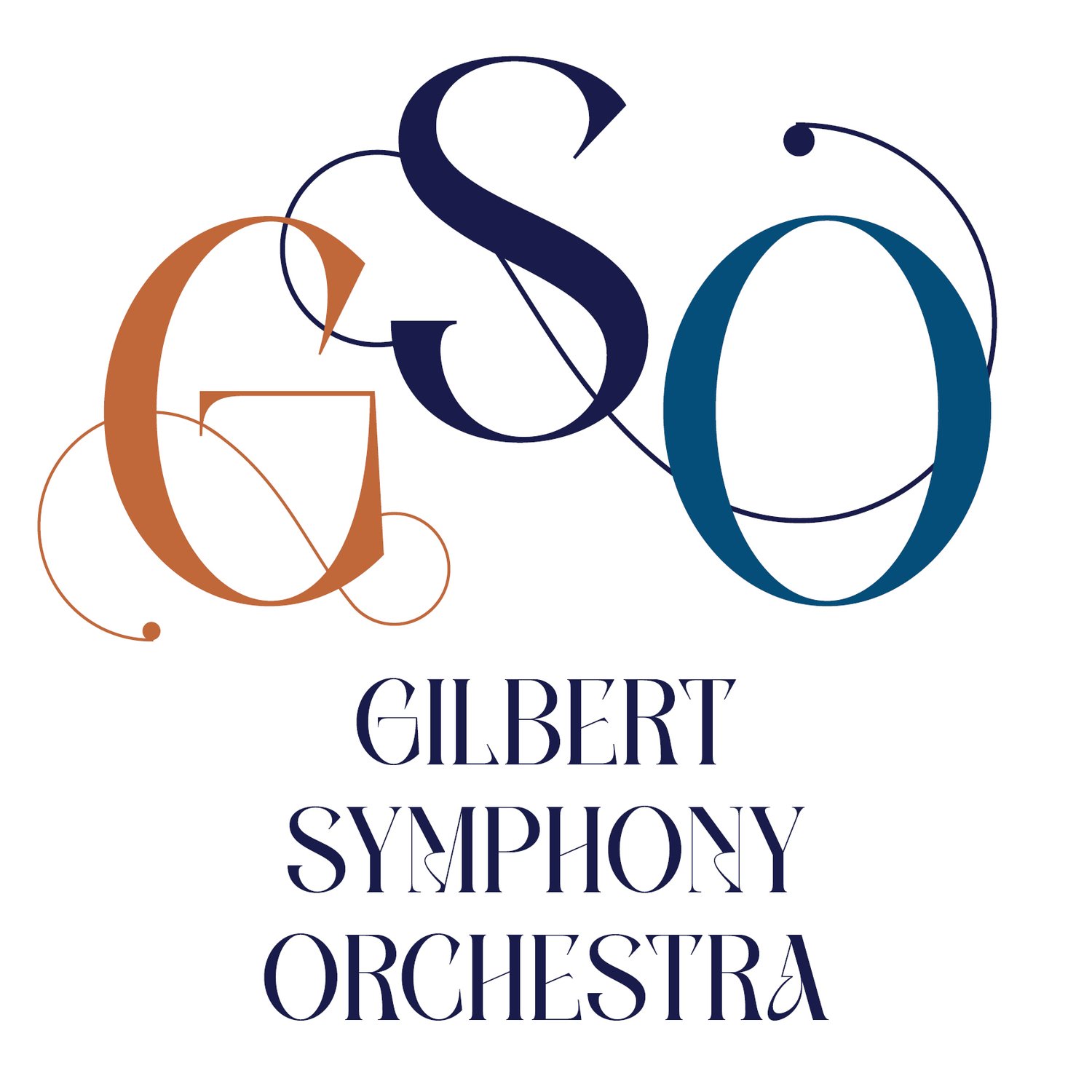FAQs
Why should I support the Gilbert Symphony Orchestra?
Your business will connect with a diverse cross-section of the community by supporting the arts.
Arts patrons actively support businesses which also support the arts.
A vibrant arts community improves the quality of life for your employees and the community.
Supporting the arts increases your visibility in the community.
Sponsorship opportunities are available for the entire concert season.
What is a Symphony Orchestra?
A symphony orchestra is a large ensemble of musicians that includes strings (violins, violas, cellos, basses), woodwinds (flutes, oboes, clarinets, bassoons), brass (horns, trumpets, trombones and tubas) and/or percussion (drums, timpani, bells, etc.). Because of its size, symphony orchestras require a conductor to help the musicians play together, follow the musical score and perform a unified interpretation of the piece.
When Should I Arrive?
Concerts normally begin promptly at the published start time. During our 2023 Season, doors will open at an hour in advance to allow adequate time to visit with sponsors, patrons, and community members, and get seated.
Late Seating: If you cannot avoid being late, late seating will take place during the first appropriate pause in the performance, at the direction of the house management. It's always best to arrive while there is plenty of time to guarantee you won't miss a single note of the performance.
Intermission: Most programs are performed with one 15-minute intermission.
Are There Any Concert Customs or Traditions About Which I Should Know?
You don’t need any special knowledge or experience to fully enjoy an orchestral concert. However, there are some customs with which you should be familiar:
WELCOMING THE SYMPHONY
The first person to come on stage after the orchestra is seated is the concertmaster (the lead first violinist), who is greeted with applause. The concertmaster is responsible for tuning the orchestra. Next to enter is the conductor (sometimes he or she will also bring that night's soloist on stage). More applause. Once the conductor has acknowledged the audience by bowing, he turns towards the orchestra, and it's time to begin.
WHEN TO BE SILENT
Silence is an important element of helping to insure that everyone enjoys the concert. In order to promote maximum concentration and enjoyment of the music, the audience should be as quiet as possible. This means no talking, humming, tapping or turning program pages. Mobile phones and all other electronic devices should be turned off and remain off and put away throughout the performance.
WHEN TO APPLAUD
For the last hundred years or so, the tradition has been to wait to clap until the very end of the piece, no matter how many individual movements there may be. The purpose of waiting is to allow the orchestra to present the piece without interruption and to help maintain the unity and beauty of the composition. A good rule is to wait until a piece ends, the conductor turns to face the audience and the applause begins.
May I Take Pictures or Record the Music?
Yes, without flash.
May I Bring My Children?
Keep in mind that most concerts last about two hours. That is usually too long for most young children (5 and under) to be still and quiet.
